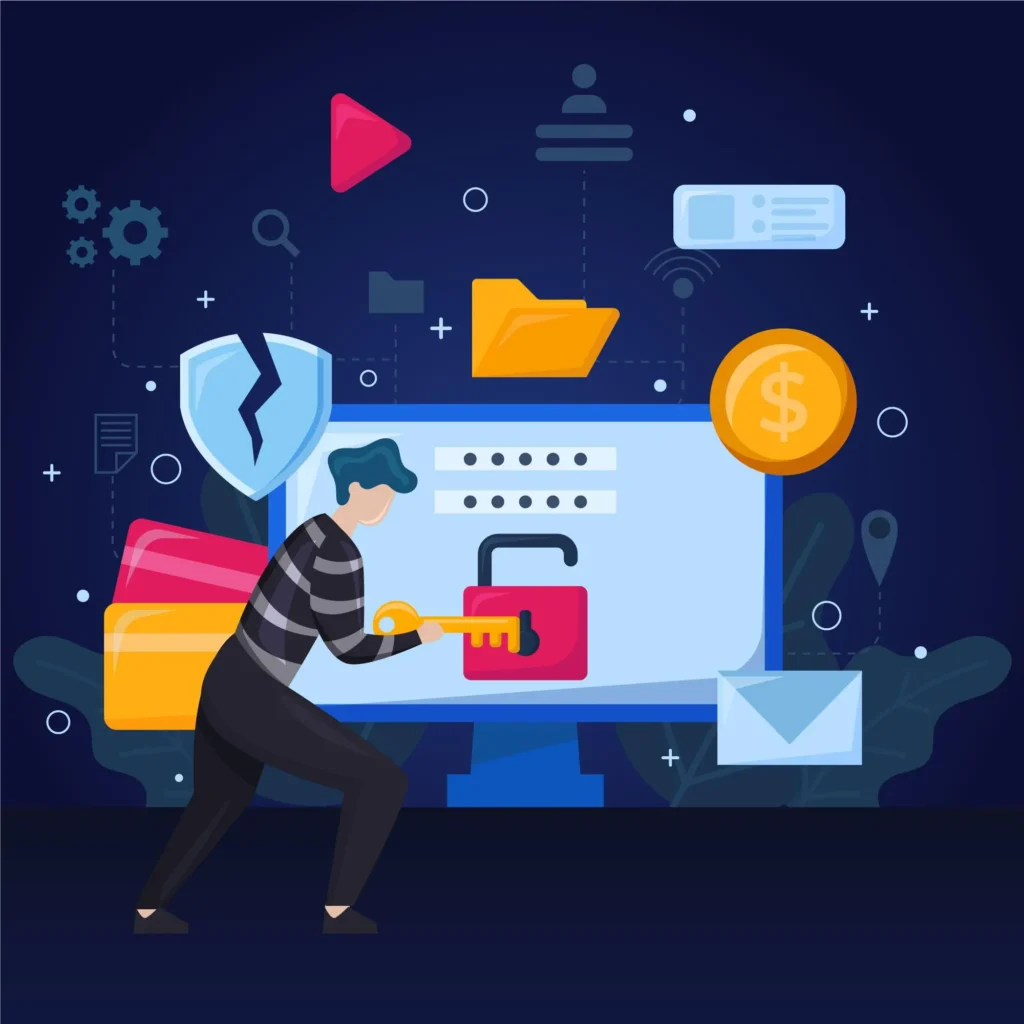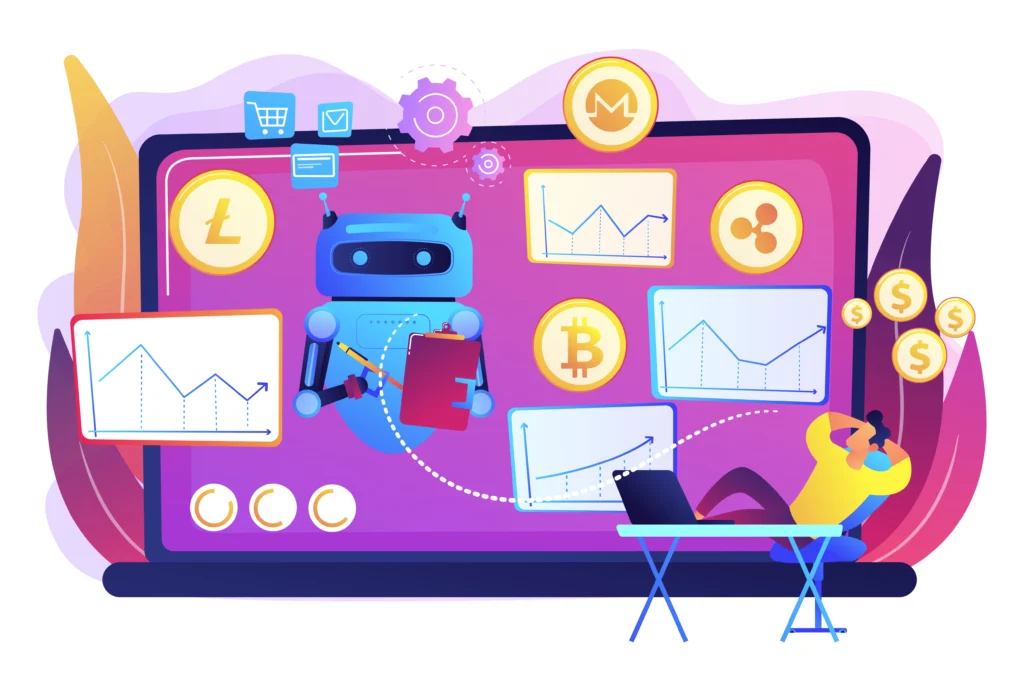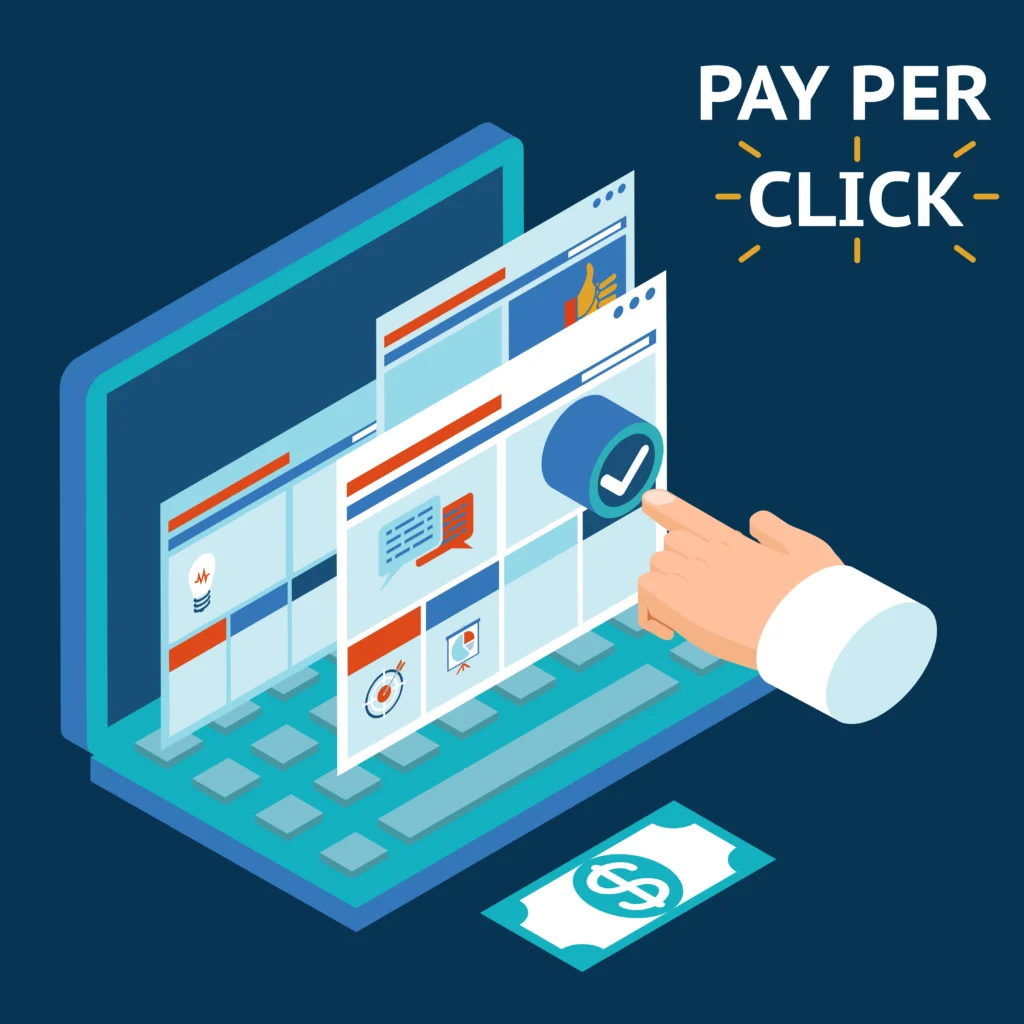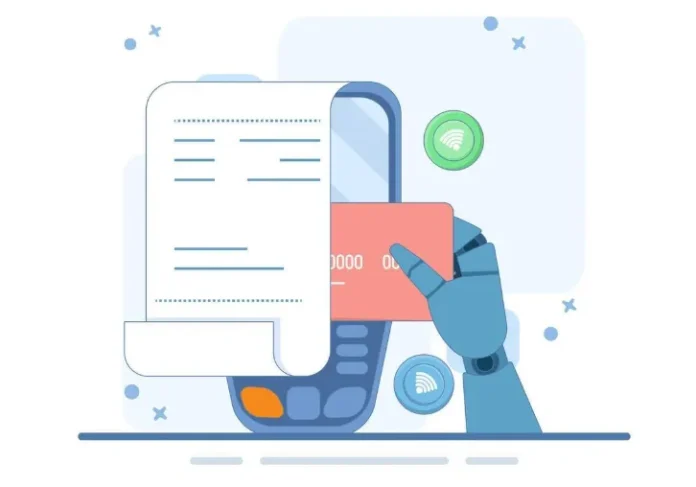The payment processing industry is evolving at a rapid pace, driven by technological advances and shifting consumer preferences. As we move into 2025, businesses and consumers alike will see significant changes in how transactions are made, what security measures are in place, and how payments are integrated into daily life. In this article, we’ll explore the top trends in payment processing to watch in 2025 and how businesses can stay ahead of the curve with secure, adaptable payment solutions.
1. The Rise of Mobile Payments
Mobile payments are when you use your phone to pay for stuff instead of cash or a card. Think tapping your phone at a store or sending money to a friend through an app like Venmo. This has gotten huge lately, and here’s why it’s taking off.
First, it’s fast. You don’t need to dig through your wallet or count change. Just grab your phone—which you probably have on you anyway—tap or scan, and you’re done. People love how quick it is, especially when they’re in a rush.
Second, phones are everywhere. Almost everyone has a smartphone now, even in places where banks aren’t common. With just a phone and an app, you can pay for things or send money without needing a bank account. This has made mobile payments explode in countries where cash used to be the only option.
Another reason is safety. Carrying cash can be risky—you might lose it or get robbed. With mobile payments, your money stays digital, and apps often have stuff like passwords or face scans to keep it secure. Even if you lose your phone, your money’s usually safe.
Mobile payments are changing small businesses too. A street vendor or a tiny shop can now take payments with just a phone and a cheap card reader—or even no reader, just a QR code. They don’t need big, expensive machines anymore, so more people can start selling.
Also, apps make it fun and social. You can split a dinner bill with friends in seconds or send cash with a silly emoji. It’s not just about buying; it’s about connecting. That’s pulled younger people in, who love doing everything on their phones.
One more thing: loyalty programs are built in. When you pay with your phone, stores can link rewards—like discounts or points—right to the app. You don’t need a separate card or coupon, so it’s easier to stick with places you like.
The rise is also because of tech getting better. Phones now have things like NFC (a chip that lets you tap to pay), and internet speeds are faster, so payments go through without hiccups. Plus, during times like the pandemic, people didn’t want to touch cash or keypads—mobile payments felt cleaner.
So, mobile payments are growing because they’re quick, safe, and work for everyone—shoppers, businesses, even people without banks. They fit how we live now: always on the go, always connected. That’s why they’re popping up everywhere you look.
2. Increased Focus on Payment Security and Fraud Prevention
As digital payments become more widespread, so do the risks associated with them. Security will continue to be a major concern for consumers and businesses alike. Cyberattacks, data breaches, and identity theft are becoming more sophisticated, making it crucial for payment processors to implement advanced security measures.
The Rising Threat of Payment Fraud
In today’s digital world, the volume of global transactions is growing at an incredible rate, with online and contactless payments becoming the standard. But as the use of these payment methods increases, so does the sophistication of cybercriminals targeting payment systems. Payment fraud is now costing the global economy billions each year. These losses aren’t just about money; they also reflect the wider impact on consumer trust, the need for more spending on security, and the resources required to respond to these complex attacks. As digital networks become more connected, the risks continue to grow, and it’s clear that strong, intelligent security measures are no longer just a technical need, but an economic necessity for businesses, financial institutions, and consumers.
Advanced Authentication Strategies
The digital payment system is being greatly improved by a layered security approach that combines advanced authentication technologies to provide strong protection for financial transactions. Multi-Factor Authentication (MFA) has become a crucial first line of defense. It requires users to provide multiple forms of verification, such as passwords, biometric data, or device codes, before accessing sensitive financial systems. Alongside MFA, the Zero-Trust Security Model is becoming more common. This model works on the principle of “never trust, always verify,” meaning it checks every access attempt thoroughly, no matter where it comes from. This approach helps remove weaknesses found in traditional network security systems.
Tokenization is also improving payment security by replacing sensitive data like credit card numbers with unique, randomly generated tokens that are useless if intercepted. Additionally, end-to-end encryption ensures that transaction data remains unreadable throughout its entire journey.
These combined security methods offer a strong shield against the increasing number of cyber threats, providing better protection for both businesses and consumers.
How Digital Payments Now Put Fraud Protection
Modern consumer protection in digital payments has developed into a strong, proactive defense system that gives users more control and awareness over their transactions. Real-time transaction alerts are a major improvement, instantly notifying consumers of any financial activity through mobile apps or text messages. This gives users immediate awareness of any potential unauthorized transactions.
In addition to these alerts, instant freeze/unfreeze card capabilities allow consumers to quickly stop potential fraud with just a tap on their smartphone, making the process of canceling a card much faster and more efficient.
Automated fraud detection systems are also at work, using advanced artificial intelligence and machine learning algorithms to spot suspicious patterns and potential threats before they can cause any real damage.
Equally important are consumer education initiatives. These go beyond basic security tips and focus on teaching people how to recognize phishing attempts, understand digital payment risks, and adopt best practices for personal financial security. This approach helps create a more informed and resilient user base, empowering individuals to take control and protect their financial interests.

3. The Integration of Blockchain Technology
Blockchain is not just for cryptocurrencies anymore. In 2025, we can expect blockchain technology to have a greater influence on payment processing. Blockchain offers the potential to streamline payment processes by enabling peer-to-peer transactions without the need for intermediaries. It could reduce transaction costs, improve transparency, and enhance security by creating an immutable record of all transactions.
While blockchain’s adoption in mainstream payment processing is still in its early stages, by 2025, more businesses will explore blockchain’s ability to simplify and secure payments, especially in cross-border transactions. Blockchain could help reduce fraud, speed up international payments, and provide transparency for consumers.
EasyPayDirect stays ahead of the curve by offering adaptable payment solutions that can integrate with emerging technologies like blockchain. Whether it’s for cross-border transactions or offering businesses new ways to accept payments, EasyPayDirect ensures they’re ready for what the future holds.
4. The Growth of Subscription-Based Payments
Subscription payments are when you pay a set amount regularly—like every month—to use something, like a service or product. Think Netflix, Spotify, or even a gym membership. This way of paying has gotten really popular lately, and here’s why it’s growing. People like it because it’s easy. Instead of buying something once for a big price, you pay a little bit at a time. It feels less stressful on your wallet. For example, instead of dropping $100 on a video game, you might pay $10 a month to play tons of games through a service like Xbox Game Pass.
Businesses love it too. When you subscribe, they know you’ll keep paying every month, so they get steady money coming in. It’s not a one-time sale that stops. This helps them plan better and keep improving what they offer. It’s growing is convenience. Subscriptions often come with stuff delivered right to you—like meal kits or even pet food. You don’t have to think about it; it just shows up. Plus, with phones and apps, signing up and managing these payments is super simple now. The world’s gone digital. More people are using online services—streaming movies, listening to music, or storing files in the cloud. These things work perfectly with subscriptions because you’re not buying a physical thing, just access to something cool.
Subscriptions are popping up in places you wouldn’t expect. Like, you can now subscribe to clothes, where companies send you new outfits every month. Or even car subscriptions—pay monthly to drive a car without owning it. It’s spreading beyond just TV and music. The growth is also tied to how people want flexibility. If you don’t like it, you can usually cancel anytime. That freedom makes it less risky to try new things.
In short, subscription payments are booming because they’re easy, steady for businesses, super convenient, and fit our digital, flexible lives.
5. The Emergence of Contactless Payments
Contactless payments have already made their mark, but by 2025, we can expect them to become the standard for many businesses and consumers. With the ongoing shift toward cashless societies, contactless payment methods will be more widely used, not only in stores but also in public transportation, vending machines, and other everyday transactions.
The convenience of simply tapping a card or phone will make contactless payments increasingly attractive to consumers. In response, businesses will need to upgrade their point-of-sale (POS) systems to handle tap-and-go transactions, offering a quicker and more efficient way to complete purchases.
| Aspect | Details | Key Benefit |
| Speed | Tap and go, instant payment | Saves time for customers and businesses |
| Hygiene | No touching cash or keypads | Reduced germ transmission, especially post-pandemic |
| Technology | NFC (Near Field Communication) | Enables quick, secure transactions |
| Payment Methods | Cards, phones, watches, rings | Flexible, wallet-free options |
| Security | Unique one-time transaction codes | Protects against theft and fraud |
| Global Adoption | Works in multiple countries | Convenient for travelers |
| Small Transactions | Perfect for quick, low-cost purchases | Replaces need for coins and cash |
| Business Impact | Faster processing, reduced cash handling | Increases efficiency for merchants |
| Target Demographics | All ages (kids to seniors) | Broad, inclusive payment method |
| Growth Drivers | Tech readiness, safety concerns, convenience | Transforming payment landscape |
6. Artificial Intelligence and Payment Processing Automation
In 2025, artificial intelligence (AI) and machine learning will play an even larger role in payment processing. AI can help detect fraud more efficiently by analyzing transaction patterns in real-time and flagging suspicious activities. Additionally, AI will be used to automate many aspects of payment processing, from customer service inquiries to payment reconciliation, freeing up resources for businesses to focus on growth.
AI-driven tools can also offer personalized payment experiences, suggesting the best payment methods for customers based on their preferences and purchasing behavior. This can improve conversion rates and customer satisfaction.
EasyPayDirect is already integrating AI-powered fraud detection and automated payment management to provide businesses with a smarter, more efficient way to process payments.

Let’s simply explain the unique ways Artificial Intelligence changes payment processing.
Artificial Intelligence (AI) and Payment Processing Automation in a simple, clear, and detailed way. This is about how smart tech (AI) is changing how we handle payments—making them faster, easier, and safer. I’ll give you fresh angles and explain it all step by step.
What’s It All About?
Payment processing is how money moves—like when you buy a shirt online or tap your card at a store. It involves checking if you have the cash, moving it, and making sure it’s safe. Automation means letting machines (or tech) do most of the work instead of people. Add AI into the mix, and you’ve got super-smart machines that don’t just follow steps—they think, learn, and improve. Here’s how AI is shaking things up with unique twists.
- AI Spots Fraud Before It Happens
Imagine you’re buying a game online, but someone’s trying to use your card somewhere else. AI watches every payment like a hawk. It learns your habits—like you always shop locally or never buy at 3 a.m.—and flags anything weird instantly. Unlike old systems that just check basic rules (like “is the card stolen?”), AI digs deeper. It looks at tons of details—where you are, what you’re buying, even how fast you type—and predicts trouble before it hits. This saves you money and stops headaches. AI can even catch “friendly fraud,” where someone you know (like a kid or roommate) uses your card without asking. It notices patterns humans miss.
- Payments Happen Without You Thinking
AI can make payments so smooth you barely notice. Picture this: you’re at a coffee shop, and your phone pays the exact amount the second you grab your drink—no tapping, no app. AI links your face or voice to your account and handles it. Or if you’re late on a bill, AI could pay it for you automatically, picking the cheapest time to avoid fees. It’s like having a personal money assistant. AI might guess what you’ll buy next—like ordering your usual pizza on Friday—and prep the payment before you even ask. It learns your life and jumps ahead
- Fixing Mistakes on the Fly
Sometimes payments mess up—maybe you’re charged twice, or money goes to the wrong place. Normally, you’d call someone and wait. AI fixes this fast. It spots errors by comparing millions of transactions, figures out what went wrong, and refunds you without you lifting a finger. For businesses, it means less angry customers and fewer people to hire for support. AI even apologize for the mistake with a custom message or a tiny discount, making you feel cared for—all without a human typing it.
- Smart Pricing Just for You
AI can change what you pay based on who you are. Say you’re a loyal customer—AI notices and might lower the price of your subscription. Or if you’re shopping online, it could offer a deal right when you’re about to leave the site. It’s like the system knows you personally and tweaks things to keep you happy. In the future, AI might barter for you. Imagine it negotiating with a store’s AI to get you a better price—like “he’s a good customer, knock off $2”—all in a split second.
- No More Waiting for Money
Big payments—like sending cash overseas—can take days. AI speeds this up. It checks everything instantly (your account, the other person’s bank, even currency rules) and moves the money in seconds. It’s like greasing the wheels of an old machine. Businesses love this because they get paid faster, and you don’t wait to use your cash. AI could pick the best “path” for your money—like choosing a cheaper currency swap or avoiding slow banks—saving you a few bucks without you knowing.
- Talking to Pay
AI lets you pay with your voice. You could say, “Send Mom $20,” to your phone or a speaker, and it’s done. AI listens, understands, and double-checks it’s you (by your voice pattern). No buttons, no screens—just talk. This is huge for people who can’t type easily or when you’re busy cooking. AI might add personality—like joking, “Mom’s getting rich off you!”—making payments feel fun instead of boring.
- Helping Small Shops Win
Small businesses—like a guy selling tacos or a crafter online—used to struggle with payments. They’d pay high fees or wait for cash. AI levels the field. It can run cheap, smart payment systems on just a phone, cutting costs. It also warns them if a customer’s card might bounce, so they don’t lose money. AI suggests when to raise prices—like “it’s busy today, charge 50 cents more”—based on weather, crowds, or what’s selling, helping them earn extra.
- Green Payments with AI
AI could make payments better for the planet. Some payment systems (like crypto) use tons of energy. AI can find ways to cut that—like picking low-power options or timing transactions when energy’s cheap. It might even track how “green” a payment is and nudge you to pick eco-friendly choices. Imagine paying and seeing, “This saved 10 watts!”—AI could gamify it, so you feel good about helping the earth.
- Learning Your Language
AI makes payments work for everyone, anywhere. If you speak Spanish or a rare dialect, it can translate and guide you through paying—no confusion. It learns slang too, so if you say, “Send my buddy some dough,” it knows you mean money. This breaks down walls for people who avoid tech because of language. AI mimics your tone—like if you’re casual, it keeps it chill, or if you’re formal, it’s polite—making it feel like a friend, not a robot.
- Predicting the Future
AI doesn’t just handle payments now—it looks ahead. It might warn you, “You’re spending too much this month,” or tell a store, “Stock up, people are buying more.” By studying millions of payments, it guesses what’s next and keeps things running smooth. Spot trends no one sees—like “people buy more socks in July”—and tell businesses to get ready, saving them from running out.
Why AI’s Taking Over Payment Processing
- It’s Fast: AI does in seconds what people take hours to figure out.
- It Learns: The more it works, the smarter it gets, unlike old systems that stay dumb.
- It’s Cheap: Businesses save cash by letting AI handle the boring stuff.
- It’s Safe: AI’s like a guard dog, always watching for trouble.
- It’s Personal: It fits payments to your life, not the other way around.
A Fun Example
You’re at a fair. You tell your watch, “Pay for this cotton candy.” AI hears you, checks it’s your voice, sees you’re at the fair, and pays the vendor instantly. It notices you love sweets and offers a deal on popcorn next. If someone tries to hack it, AI blocks them before they blink. All this happens while you’re just enjoying your day.
The Big Picture
AI in payment processing automation is like giving money a brain. It’s not just moving cash—it’s making it smarter, safer, and more helpful. From catching crooks to chatting with you, it’s changing how we pay in ways we’re only starting to see. And the best part? It’s all getting easier for us while it does the hard work behind the scenes.
7. Future of Payment Processing
Payment processing is how money moves from you to a store, a friend, or anywhere else when you buy something or send cash. It’s changing fast, and here’s what’s coming.

- Everything Goes Invisible
In the future, paying might not even feel like paying. Imagine walking into a store, grabbing what you want, and just leaving—no lines, no tapping your phone or card. Cameras and sensors will know who you are and charge you automatically. This is already starting with stuff like Amazon’s “Just Walk Out” stores. It’s like magic—you don’t see the payment happen, but it’s done. This could spread to coffee shops, gas stations, anywhere.
- Your Body Becomes Your Wallet
Cards and phones might disappear. Instead, you could pay with your fingerprint, your face, or even a tiny chip under your skin. It sounds wild, but some people are already testing chips to unlock doors or buy snacks. It’s super fast and hard to steal. In the future, you might wave your hand at a scanner, and boom, you’ve paid.
- Money Talks to Money
Payments could get so smart they happen without you doing anything. Picture this: your fridge notices you’re out of milk and orders more all by itself, paying from your account. Or your car pays for gas or tolls as you drive. Devices will talk to each other and handle payments for you. This is called the “Internet of Things,” where stuff like your watch or thermostat makes decisions and pays on its own.
- Crypto and Digital Cash Take Over
Regular money might not be king anymore. Digital money, like Bitcoin or new kinds made by governments (called CBDCs—central bank digital currencies), could run the show. You’d store it on your phone or a special app, and it’d work anywhere in the world instantly. No banks slowing things down, no fees for switching dollars to euros. Some countries are already testing this, like China with its digital yuan.
- Unique Angle: Paying with Your Voice
You might just talk to pay. Imagine saying, “Hey, pay my friend $10,” to your phone or a speaker like Alexa, and it’s done. Voice tech is getting better, and it could team up with payments. It’d be handy when you’re cooking or driving—no need to touch anything, just speak.
- Super Speed Everywhere
Payments will get crazy fast. Right now, some take seconds or even days (like bank transfers). In the future, every payment could be instant, even across countries. New tech like blockchain (a secure way to track money) or faster networks will make it so you send cash to someone in Japan, and they have it before you blink.
- More Power to You
You’ll control payments more. Apps might let you set rules—like only spending $50 a week on coffee or splitting bills automatically with roommates. Or if a store charges you wrong, you could fix it yourself with a tap. It’s like having a mini-bank in your pocket, giving you the driver’s seat.
- Green Payments
Payments could help the planet. In the future, you might pick how your money moves—like choosing a system that uses less energy (some payment tech, like crypto, uses a ton of power now). Or every purchase could round up a penny to plant trees. Companies might push this to look good and help the earth.
- No More Middleman
Banks and card companies might get cut out. You could pay someone directly—phone to phone—using new systems that don’t need a big company in between. This could make payments cheaper (no fees!) and faster, especially for small businesses or people sending money home to family far away.
- Safety Gets Smarter
Hackers won’t give up, so security will level up. Future payments might use AI (smart tech) to watch every transaction and spot anything weird—like if someone tries to use your account in another country. Plus, your info could be scrambled in ways that make it useless if stolen.
Conclusion: Preparing for the Future of Payment Processing
As we look ahead to 2025, it’s clear that payment processing will continue to evolve with new technologies and shifting customer expectations. From mobile payments and blockchain to AI-driven automation and subscription-based models, the industry is set to undergo significant transformations.
To stay competitive, businesses must adapt to these trends and implement secure, efficient, and innovative payment solutions.
As payment processing continues to evolve, businesses that prioritize security, customer convenience, and technological adaptability will be best positioned to succeed in the ever-changing digital economy.
